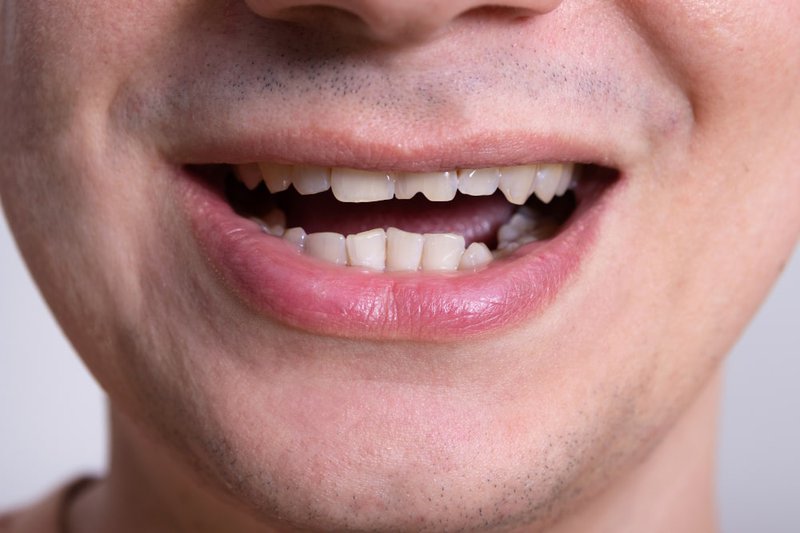
Does Insurance Cover Cosmetic Dentistry in Canada?
Key Takeaways
- Cosmetic dentistry in Canada encompasses procedures designed to enhance the appearance of teeth, gums, and the smile.
- It is distinct from restorative dentistry, which focuses on function and health.
- Most cosmetic procedures are not covered by insurance unless deemed medically necessary.
- Veneer coverage depends on the type and purpose of the procedure, with composite options being more affordable.
- Composite bonding may be partially covered if used for restorative reasons, but not for aesthetic improvements.
- Teeth whitening is rarely covered by insurance in Canada, regardless of the method used.
- There are various types of dental insurance plans in Canada, including employer-based, private, and government-supported plans, each with its own limitations.
What qualifies as cosmetic dentistry in Canada?
The term "cosmetic dentistry" might conjure up images of Hollywood smiles and Instagram-worthy veneers. Still, in Canada, it refers to a specific subset of dental procedures that focus primarily on aesthetic improvement rather than functional necessity.
Cosmetic vs. Restorative Dentistry
Understanding the difference between cosmetic and restorative dentistry is foundational. Although both may use similar procedures and materials, their goals diverge:
- Cosmetic dentistry focuses on enhancing the appearance of teeth, gums, and overall smile aesthetics. The procedures are elective, meaning patients choose them for aesthetic reasons.
- Restorative dentistry, on the other hand, focuses on restoring functionality to damaged or missing teeth. Insurance typically covers these treatments because they address health-related issues.
Common Cosmetic Treatments in Canada
Here are the most common cosmetic procedures offered by Canadian dentists:
- Teeth Whitening: Bleaching agents remove stains and discolouration.
- Dental Veneers: Thin shells of porcelain or composite material bonded to the front of teeth.
- Bonding: Application of tooth-coloured resin to repair chips, gaps, or discolouration.
- Orthodontics (Invisalign or Braces): While often considered functional, adult orthodontics is frequently pursued for cosmetic reasons.
- Gum Contouring: Reshapes the gum line to improve smile symmetry.
- Dental Implants: When used solely for aesthetic purposes (e.g., replacing a visible missing tooth in the smile), they may be considered a cosmetic procedure.
According to the Canadian Dental Association, cosmetic procedures are increasingly popular but generally not medically required. As stated on their site:
"Aesthetic procedures are performed to improve appearance. They are not usually covered by insurance unless linked to function or trauma."
Cosmetic vs. Restorative: Quick Comparison Table
| Feature | Cosmetic Dentistry | Restorative Dentistry |
|---|---|---|
| Goal | Aesthetic improvement | Functional restoration |
| Coverage | Rarely covered by insurance | Often covered |
| Examples | Veneers, whitening, bonding | Crowns, fillings, bridges |
| Elective or Necessary | Elective | Necessary |
| Materials Used | Composite, porcelain | Composite, metal, ceramics |

Does Canadian dental insurance ever cover cosmetic dentistry?
If you’ve ever asked, "Will my insurance cover this treatment?" — you’re not alone. The answer is not always straightforward when it comes to cosmetic dentistry in Canada.
Understanding Coverage Rules
Most private dental insurance plans in Canada do not cover cosmetic procedures. That’s because they classify treatments like whitening and veneers as elective.
However, if a procedure has a dual purpose — improving appearance and correcting a functional issue — some or all of it may be reimbursed.
Examples of dual-purpose procedures:
- A crown was placed for a fractured tooth (restorative and cosmetic)
- Orthodontics is required to correct a bite problem, which also enhances aesthetics.
- Veneers after traumatic injury, not just discoloration
Dr. James C.H. Ko, DDS, explains:
"Dental insurance coverage is usually focused on function. However, if the cosmetic procedure restores a damaged or compromised tooth, patients may be eligible for partial reimbursement. It’s best to have your dentist submit a pre-authorization first."
Medical Necessity vs. Aesthetics
Here’s the critical factor: Is the treatment medically necessary? If yes, then it may be eligible for coverage.
- Treatments done for health reasons (e.g., repairing a broken tooth) can be covered.
- Procedures done purely for aesthetic improvement (e.g., whitening for yellow teeth) typically are not.
Does insurance cover veneers in Canada?
Veneers are one of the most sought-after cosmetic dental treatments — and also one of the least likely to be covered by insurance in Canada.
Porcelain vs. Composite Veneers
The type of veneer affects both cost and potential coverage:
- Porcelain Veneers:
- High durability (10–15 years)
- Natural look and stain resistance
- Higher cost (typically $1,000–$2,500 per tooth)
- Rarely covered unless for restorative reasons
- Composite Veneers:
- Less expensive ($300–$800 per tooth)
- Shorter lifespan (5–7 years)
- More likely to be covered in part, primarily if used to repair damage

When Are Veneers Covered?
Insurance may provide partial coverage in the following situations:
- The tooth was damaged due to trauma
- Veneers are required to repair structural defects.
- A dentist proves that the treatment improves oral function.
In these cases, a pre-authorization is essential. The insurance provider will review your dentist’s justification before approving any payment.
Veneer Coverage Comparison Table
| Feature | Porcelain Veneers | Composite Veneers |
|---|---|---|
| Cost (Per Tooth) | $1,000–$2,500 | $300–$800 |
| Lifespan | 10–15 years | 5–7 years |
| Insurance Coverage | Rare (except trauma cases) | Possible if restorative use |
| Appearance | Highly natural, stain-resistant | Good, but less stain-resistant |
Does insurance cover composite bonding procedures?
Composite bonding is often confused with cosmetic procedures, but its use case determines whether it qualifies for insurance coverage.
What is Composite Bonding Used For?
Composite bonding involves applying a tooth-coloured resin to reshape or repair teeth. Common reasons for bonding include:
- Repairing chipped or cracked teeth
- Closing small gaps between teeth
- Improving the appearance of discoloured teeth
- Reshaping uneven teeth
When bonding is done to restore tooth structure or integrity — like after an accident — insurance is more likely to reimburse some or all of the cost.
Coverage for Repairs vs. Aesthetic Bonding
- Repair-based bonding (e.g., chipped tooth from trauma): Often reimbursed under basic dental coverage
- Aesthetic bonding (e.g., reshaping for appearance): Rarely covered
Documentation and Coding Matters
The key to potential reimbursement lies in how the procedure is presented:
- Use restorative treatment codes when bonding is medically justified
- Provide detailed documentation: X-rays, clinical notes, before-and-after images.
- Submit a pre-treatment estimate to clarify insurance eligibility before the procedure.
Will insurance pay for teeth whitening treatments?
Teeth whitening, whether done at home or professionally, is seldom covered by dental insurance plans in Canada.
Why Teeth Whitening Isn’t Covered
Most Canadian insurance providers, including Manulife, Sun Life, and Green Shield, classify teeth whitening as purely cosmetic. That includes:
- In-office professional bleaching
- Custom take-home whitening trays
- Over-the-counter products like strips and gels
Because whitening does not restore tooth function or health, it is excluded from basic and major dental insurance categories.
OTC vs. Professional Whitening: What’s the Difference?
| Feature | Over-the-Counter Whitening | Professional Whitening (In-Office) |
|---|---|---|
| Cost | $20–$150 | $300–$700 |
| Custom Fit | No | Yes |
| Speed of Results | Gradual (weeks) | Immediate (1–2 hours) |
| Strength of Bleaching Agent | Low | High |
| Insurance Coverage | No | No |

What types of dental insurance exist in Canada?
Navigating dental insurance options in Canada can be tricky, especially when trying to understand what’s covered and what isn’t.
Major Types of Plans
- Group Dental Insurance (Employer-based)
- Most common in Canada
- Covers basics like check-ups, fillings, and emergency care
- May include primary services (crowns, dentures) depending on plan
- Private Dental Insurance
- Purchased by individuals or families
- Often more flexible but more expensive
- Coverage levels vary, including basic, comprehensive, and custom plans.
- Government Dental Programs
- Available to eligible seniors, children, and low-income individuals
- Includes Ontario Seniors Dental Care Program, Healthy Smiles Ontario
Can cosmetic treatments ever become medically necessary?
Yes — and it happens more often than many patients assume. While cosmetic procedures are generally elective, certain dental conditions or complications may necessitate these treatments as medically necessary.
When Cosmetic Becomes Clinical
The line between aesthetic and therapeutic is sometimes blurred. Treatments initially intended for appearance may support critical oral health outcomes when used in specific cases:
- Veneers after trauma: If a front tooth is cracked in an accident, veneers may be necessary to restore function and prevent further damage.
- Whitening before a crown: If a tooth requires a crown and the patient wants colour-matched results, surrounding teeth might need whitening first. While the whitening remains cosmetic, the crown is medically necessary.
- Bonding for enamel wear: When tooth enamel wears down due to acid reflux or grinding, bonding may restore the tooth surface — a restorative and health-based justification.
How Dentists Justify Medical Necessity
Dentists can submit clinical documentation to demonstrate the medical relevance of a procedure:
- Diagnostic reports and X-rays: Provide evidence of tooth damage, wear, or disease.
- Photographs, such as before-and-after or intraoral images, support the need.
- Treatment notes: Clear explanation of how the procedure prevents further deterioration.
In a study published in the Canadian Dental Association Journal, practitioners cited proper documentation as the single most effective strategy for appealing insurance rejections for cosmetic procedures (source).

What’s covered, what’s not, and how to be smart about it
Navigating cosmetic dentistry in Canada requires more than just knowing what you want — it means understanding what your insurance considers necessary.
What’s Typically Covered:
- Repair-based bonding
- Crowns and bridges for structural restoration
- Orthodontics for bite alignment or functional issues
- Veneers in trauma-related cases
What’s Rarely or Never Covered:
- Teeth whitening (any method)
- Veneers done purely for aesthetic alignment
- Cosmetic reshaping, contouring, or smile design
Cosmetic Treatment Coverage
| Procedure | Covered? | Notes |
|---|---|---|
| Composite Bonding | Sometimes | Covered if used for damage, not aesthetics |
| Teeth Whitening | No | Cosmetic only; not reimbursed |
| Veneers | Rarely | Covered after trauma; not for aesthetics |
| Whitening Before Crown | No (whitening) | Crown is covered; whitening not |
| Orthodontics (Adults) | Occasionally | If medically justified, it depends on the plan |
Final Thought
The smart approach? Get clarity before you commit. Request a detailed treatment plan, have your provider submit a pre-estimate, and be aware of which procedures can blur the distinction between beauty and necessity. The more proactive you are, the less likely you’ll be left with unexpected bills.

